RBS 2009 Annual Report Download - page 127
Download and view the complete annual report
Please find page 127 of the 2009 RBS annual report below. You can navigate through the pages in the report by either clicking on the pages listed below, or by using the keyword search tool below to find specific information within the annual report.-
 1
1 -
 2
2 -
 3
3 -
 4
4 -
 5
5 -
 6
6 -
 7
7 -
 8
8 -
 9
9 -
 10
10 -
 11
11 -
 12
12 -
 13
13 -
 14
14 -
 15
15 -
 16
16 -
 17
17 -
 18
18 -
 19
19 -
 20
20 -
 21
21 -
 22
22 -
 23
23 -
 24
24 -
 25
25 -
 26
26 -
 27
27 -
 28
28 -
 29
29 -
 30
30 -
 31
31 -
 32
32 -
 33
33 -
 34
34 -
 35
35 -
 36
36 -
 37
37 -
 38
38 -
 39
39 -
 40
40 -
 41
41 -
 42
42 -
 43
43 -
 44
44 -
 45
45 -
 46
46 -
 47
47 -
 48
48 -
 49
49 -
 50
50 -
 51
51 -
 52
52 -
 53
53 -
 54
54 -
 55
55 -
 56
56 -
 57
57 -
 58
58 -
 59
59 -
 60
60 -
 61
61 -
 62
62 -
 63
63 -
 64
64 -
 65
65 -
 66
66 -
 67
67 -
 68
68 -
 69
69 -
 70
70 -
 71
71 -
 72
72 -
 73
73 -
 74
74 -
 75
75 -
 76
76 -
 77
77 -
 78
78 -
 79
79 -
 80
80 -
 81
81 -
 82
82 -
 83
83 -
 84
84 -
 85
85 -
 86
86 -
 87
87 -
 88
88 -
 89
89 -
 90
90 -
 91
91 -
 92
92 -
 93
93 -
 94
94 -
 95
95 -
 96
96 -
 97
97 -
 98
98 -
 99
99 -
 100
100 -
 101
101 -
 102
102 -
 103
103 -
 104
104 -
 105
105 -
 106
106 -
 107
107 -
 108
108 -
 109
109 -
 110
110 -
 111
111 -
 112
112 -
 113
113 -
 114
114 -
 115
115 -
 116
116 -
 117
117 -
 118
118 -
 119
119 -
 120
120 -
 121
121 -
 122
122 -
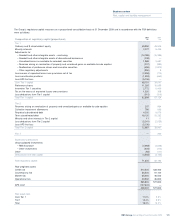 123
123 -
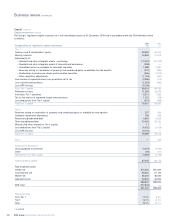 124
124 -
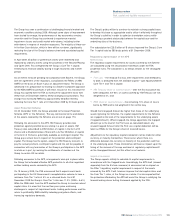 125
125 -
 126
126 -
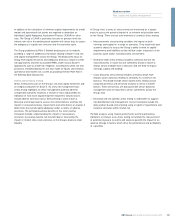 127
127 -
 128
128 -
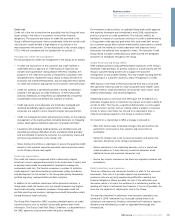 129
129 -
 130
130 -
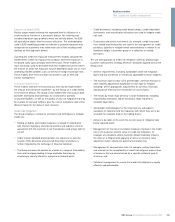 131
131 -
 132
132 -
 133
133 -
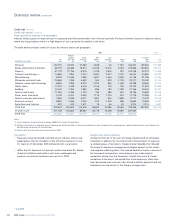 134
134 -
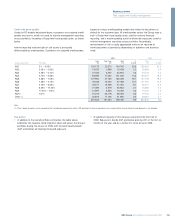 135
135 -
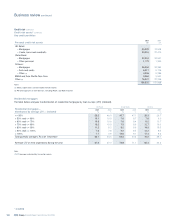 136
136 -
 137
137 -
 138
138 -
 139
139 -
 140
140 -
 141
141 -
 142
142 -
 143
143 -
 144
144 -
 145
145 -
 146
146 -
 147
147 -
 148
148 -
 149
149 -
 150
150 -
 151
151 -
 152
152 -
 153
153 -
 154
154 -
 155
155 -
 156
156 -
 157
157 -
 158
158 -
 159
159 -
 160
160 -
 161
161 -
 162
162 -
 163
163 -
 164
164 -
 165
165 -
 166
166 -
 167
167 -
 168
168 -
 169
169 -
 170
170 -
 171
171 -
 172
172 -
 173
173 -
 174
174 -
 175
175 -
 176
176 -
 177
177 -
 178
178 -
 179
179 -
 180
180 -
 181
181 -
 182
182 -
 183
183 -
 184
184 -
 185
185 -
 186
186 -
 187
187 -
 188
188 -
 189
189 -
 190
190 -
 191
191 -
 192
192 -
 193
193 -
 194
194 -
 195
195 -
 196
196 -
 197
197 -
 198
198 -
 199
199 -
 200
200 -
 201
201 -
 202
202 -
 203
203 -
 204
204 -
 205
205 -
 206
206 -
 207
207 -
 208
208 -
 209
209 -
 210
210 -
 211
211 -
 212
212 -
 213
213 -
 214
214 -
 215
215 -
 216
216 -
 217
217 -
 218
218 -
 219
219 -
 220
220 -
 221
221 -
 222
222 -
 223
223 -
 224
224 -
 225
225 -
 226
226 -
 227
227 -
 228
228 -
 229
229 -
 230
230 -
 231
231 -
 232
232 -
 233
233 -
 234
234 -
 235
235 -
 236
236 -
 237
237 -
 238
238 -
 239
239 -
 240
240 -
 241
241 -
 242
242 -
 243
243 -
 244
244 -
 245
245 -
 246
246 -
 247
247 -
 248
248 -
 249
249 -
 250
250 -
 251
251 -
 252
252 -
 253
253 -
 254
254 -
 255
255 -
 256
256 -
 257
257 -
 258
258 -
 259
259 -
 260
260 -
 261
261 -
 262
262 -
 263
263 -
 264
264 -
 265
265 -
 266
266 -
 267
267 -
 268
268 -
 269
269 -
 270
270 -
 271
271 -
 272
272 -
 273
273 -
 274
274 -
 275
275 -
 276
276 -
 277
277 -
 278
278 -
 279
279 -
 280
280 -
 281
281 -
 282
282 -
 283
283 -
 284
284 -
 285
285 -
 286
286 -
 287
287 -
 288
288 -
 289
289 -
 290
290 -
 291
291 -
 292
292 -
 293
293 -
 294
294 -
 295
295 -
 296
296 -
 297
297 -
 298
298 -
 299
299 -
 300
300 -
 301
301 -
 302
302 -
 303
303 -
 304
304 -
 305
305 -
 306
306 -
 307
307 -
 308
308 -
 309
309 -
 310
310 -
 311
311 -
 312
312 -
 313
313 -
 314
314 -
 315
315 -
 316
316 -
 317
317 -
 318
318 -
 319
319 -
 320
320 -
 321
321 -
 322
322 -
 323
323 -
 324
324 -
 325
325 -
 326
326 -
 327
327 -
 328
328 -
 329
329 -
 330
330 -
 331
331 -
 332
332 -
 333
333 -
 334
334 -
 335
335 -
 336
336 -
 337
337 -
 338
338 -
 339
339 -
 340
340 -
 341
341 -
 342
342 -
 343
343 -
 344
344 -
 345
345 -
 346
346 -
 347
347 -
 348
348 -
 349
349 -
 350
350 -
 351
351 -
 352
352 -
 353
353 -
 354
354 -
 355
355 -
 356
356 -
 357
357 -
 358
358 -
 359
359 -
 360
360 -
 361
361 -
 362
362 -
 363
363 -
 364
364 -
 365
365 -
 366
366 -
 367
367 -
 368
368 -
 369
369 -
 370
370 -
 371
371 -
 372
372 -
 373
373 -
 374
374 -
 375
375 -
 376
376 -
 377
377 -
 378
378 -
 379
379 -
 380
380 -
 381
381 -
 382
382 -
 383
383 -
 384
384 -
 385
385 -
 386
386 -
 387
387 -
 388
388 -
 389
389 -
 390
390
 |
 |

Business review
Risk, capital and liquidity management
In addition to the calculation of minimum capital requirements for credit,
market and operational risk, banks are required to undertake an
Individual Capital Adequacy Assessment Process (ICAAP) for other
risks. The Group’s ICAAP, in particular, focuses on pension fund risk,
interest rate risk in the banking book together with stress tests to assess
the adequacy of capital over one year and the economic cycle.
The Group publishes its Pillar 3 (Market disclosures) on its website,
providing a range of additional information relating to Basel II and risk
and capital management across the Group. The disclosures focus on
Group level capital resources and adequacy, discuss a range of credit
risk approaches and their associated RWAs under various Basel II
approaches such as credit risk mitigation, counterparty credit risk and
provisions. Detailed disclosures are also made on equity, securitisation,
operational and market risk, as well as providing Interest Rate Risk in
the Banking Book disclosures.
Stress and scenario testing
Stress testing forms part of the Group’s risk and capital framework and
an integral component of Basel II. As a key risk management tool,
stress testing highlights to senior management potential adverse
unexpected outcomes related to a mixture of risks and provides an
indication of how much capital might be required to absorb losses,
should adverse scenarios occur. Stress testing is used at both a
divisional and Group level to assess risk concentrations, estimate the
impact of stressed earnings, impairments and write-downs on capital. It
determines the overall capital adequacy under a variety of adverse
scenarios. The principal business benefits of the stress testing
framework include: understanding the impact of recessionary
scenarios; assessing material risk concentrations; forecasting the
impact of market stress and scenarios on the Group’s balance sheet
liquidity.
At Group level, a series of stress events are monitored on a regular
basis to assess the potential impact of an extreme yet plausible event
on the Group. There are four core elements of scenario stress testing:
•Macroeconomic stress testing considers the impact on both
earnings and capital for a range of scenarios. They entail multi-year
systemic shocks to assess the Group’s ability to meet its capital
requirements and liabilities as they fall due under a downturn in the
business cycle and/or macroeconomic environment;
•Enterprise wide stress testing considers scenarios that are not
macroeconomic in nature but are sufficiently broad in nature to
impact across multiple risks or divisions and are likely to impact
earnings, capital and funding;
•Cross-divisional stress testing includes scenarios which have
impacts across divisions relating to sensitivity to a common risk
factor(s). This would include sector based stress testing across
corporate portfolios and sensitivity analysis to stress in market
factors. These stress tests are discussed with senior divisional
management and are reported to senior committees across the
Group; and
•Divisional and risk specific stress testing is undertaken to support
risk identification and management. Current examples include the
daily product based stress testing using a hybrid of hypothetical and
historical scenarios within market risk.
Portfolio analysis, using historic performance and forward looking
indicators of change, uses stress testing to facilitate the measurement
of potential exposure to events and seeks to quantify the impact of an
adverse change in factors which drive the performance and profitability
of a portfolio.
125RBS Group Annual Report and Accounts 2009
